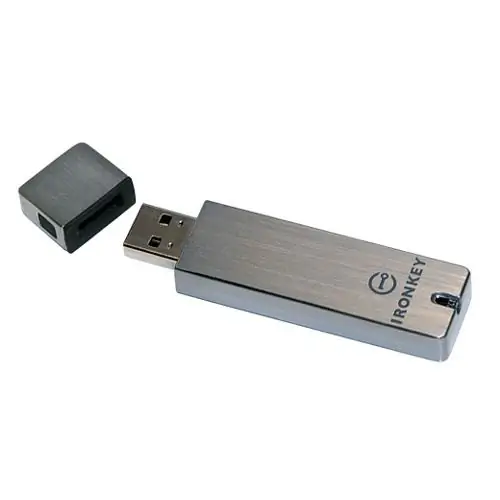Flash drives, in common parlance, flash drives, have become such a familiar part of our life that many today cannot imagine themselves without them. With their miniature size, large capacity and ease of use, they have become the ideal storage medium. The only problem is the need to protect such confidential information, because a small flash drive can easily be lost, stolen, or simply looked at by someone else's curious eyes.

Instructions
Step 1
Before transferring personal data and passwords to a flash drive, you should take care of the reliable protection of the media. The type of protection largely depends on what kind of information and in what form you want to protect. If you just need to close a few files from outsiders, you can use the usual WinRar archiver program. This method is well suited when you need to transfer information on a flash drive through third hands once and at the same time protect the transmitted data from the accidental curiosity of strangers.
Step 2
To do this, you need to create a separate new folder on the flash drive, into which to transfer the protected files. Then, by clicking on it with the right mouse button, select the item "Add to archive" in the drop-down context menu. In the window that opens, you need to go to the "Advanced" tab, which will have the "Set password" option. After that, you must enter the password twice in the proposed field and, for reliability, check the box "Encrypt file names" The password can be sent by phone (SMS) or by e-mail to the final addressee. This method is not very reliable, but it is convenient for one-off cases due to its simplicity.
Step 3
A more serious protection option involves setting a password for the entire flash drive at once. This is a more complex method and requires the use of special software, but its high reliability and long-term use justifies all efforts. Its principle of operation is based on the creation of an encrypted virtual disk (volume) on a flash drive, which looks like an ordinary single file before entering the password. The big advantage of an encrypted disk is that it cannot be viewed from the outside, it is impossible to know what directories and files are stored inside.
Step 4
There are several programs that create virtual encrypted disks. The most convenient of these by far is probably TrueCrypt. It can be downloaded for free from the manufacturer's website (https://www.truecrypt.org/downloads). The program is in English, so it is more convenient to immediately install a crack, which can also be downloaded from the website (https://www.truecrypt.org/localizations). TrueCrypt should initially be installed on your computer's hard drive rather than directly onto a flash drive. The program is unpacked and installed automatically, without requiring any special settings
Step 5
After installing TrueCrypt on your hard drive, you need to launch it and insert your flash drive into the USB port. First of all, the flash drive will have to be formatted, so you should take care of preserving the information available on it in advance. After formatting, start creating a virtual disk. In the TrueCrypt menu, select Create Encrypted File Container and then Normal Volume.
Step 6
The program will ask for the address to place the volume. Select your flash drive from the File menu (usually drive E) and give the new volume a name (whatever you like). The size of the volume should be slightly less than the size of the flash drive. Next, at the request of the program, enter your password. In order not to make mistakes when re-entering the password, it is convenient to use the "Show password" option. As a result, an encrypted container in the form of a single file will be obtained on a flash drive, in which any information can be stored. After entering the password, it opens like a regular logical drive.






